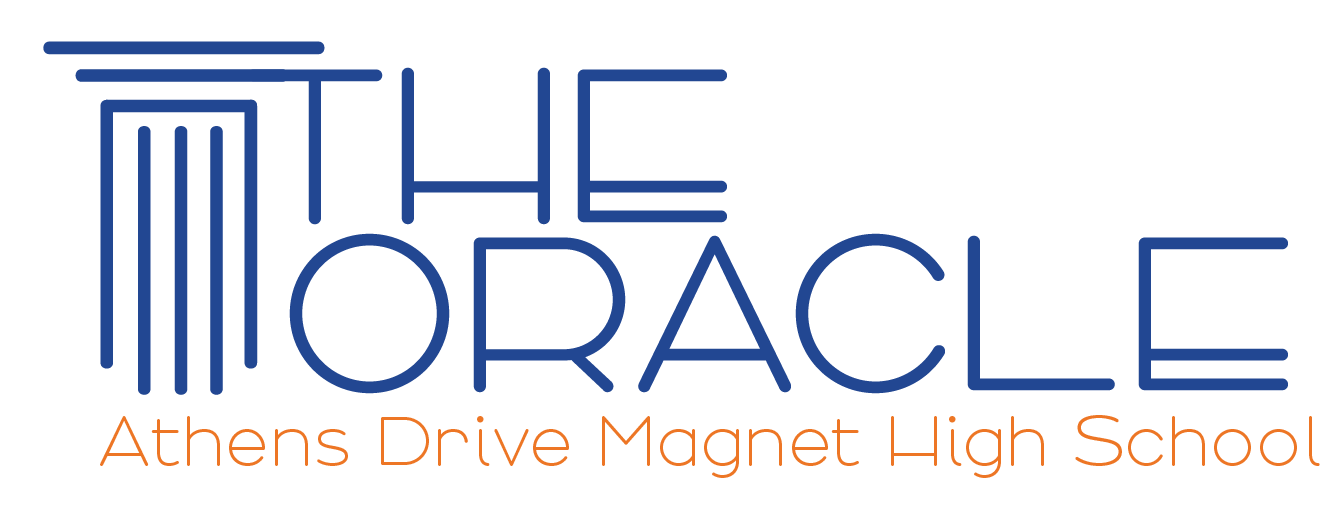A majority of students in America consume caffeine. Many students are desperate to stay awake completing assignments and are unaware of the negative effects of caffeine. From sipping coffee to chugging energy drinks, students in America have a serious caffeine addiction.
Several of these students claim that caffeine is vital for them to stay awake and focused during school hours. When it’s time to get to work or study for an exam, coffee is their way to go.
“I drink an energy drink if I didn’t sleep well the night before, usually in the morning before school,” said Brian Birnstein, junior.
Brand name companies such as Starbucks and Dunkin’ capitalize on the need for caffeine. Targeting teens worldwide, they advertise sweet and sugary drinks that appeal to the young students. This constant exposure to caffeine commercials in videos they watch and the posters they pass and persuades students. Students are the perfect audience for coffee and energy drink companies to market to. Students that are in a desperate need of the extra energy boost that they quickly fall victim to the marketing of these companies.
“Caffeine helps me focus and keep me energetic on another level,” said Mohammad Sajdieh, junior.
Most caffeinated beverages are filled to the brim with sugar. Which makes them appealing to students. All this sugar that is pumped into the drinks helps give that temporary, extra energy the students want. The combination of caffeine and sugar creates the perfect storm for students.
Alternatives
The biggest reason people drink coffee regularly is because of their addiction to caffeine. The bad thing about this is that overtime their bodys will become more and more tolerant to the drug, increasing their need for it everytime they drink it. There are some healthier and less harmful alternatives to get the energy people feel they need.
One option is a flower called Rhodiola. The flower’s root has a history of being used in medieval Russia and Europe to boost energy and work performance. While nowadays this isn’t a prescribed doctor treatment, you can still take this supplement in pill form.
Having something that tastes like coffee might trigger your brain to have a “placebo effect”. The placebo effect is a term used when a person is under the influence that they are being affected by something that is not actually happening. Chicory root is the closest thing an individual can get to the actual coffee bean taste. It tastes very similar, with an additional woody and nutty taste. The chicory root is boiled in water to extract its nutrients and taste, then the water can be drunk.
Exercise will also boost the feeling of energy in an individual. When people exercise, their bodies create more mitochondria to regulate all of the excess oxygen they have in their cells from heavy breathing. Mitochondria are the “powerhouse of the cells” because they produce energy. The more of these they have in their bodys, the more energized they will feel.
“I am addicted to caffeine, but I want to find new ways of getting energy,”Laura Wale, Sophomore.
Products that contain caffeine
There is a wide variety of different products that contain caffeine. Popular products such as coffee, tea, soda, chocolate, candy, etc. may contain more caffeine than the consumer realizes.
If an individual brews an eight-ounce cup of black coffee in the morning and drinks it, they are consuming an average of 100 mg of caffeine. Caffeine is a drug that stimulates the central nervous system which leads to the body being more aware and awake. “I thought that an eight ounce cup of coffee was around 35 milliliters of caffeine,” said Brooke Pohlman, junior.
This stimulant takes action and affects the body within moments.“Half-life” is a term used to describe when the body is eliminating this drug out of its system. The effects of the “half-life” last three to five hours. “Caffeine is a Central Nervous System (CNS) Stimulant that has the ability to enhance concentration, increase metabolism, and boost mood. Whether it comes from coffee, tea, energy drinks, or soda, many people feel like they need Caffeine in the morning to increase alertness and the motivation to work,” said the website Caffeine Center.
Tea is another drink with a high level of caffeine. A brewed eight-ounce cup of green tea is about 28 mg, not as much as coffee, but still a fair amount. Black tea is about double the amount; an eight-ounce cup of black tea is 47 ounces. For those who seek extreme amounts of caffeine, energy drinks are a popular option. The classic Bang energy drink contains 300 mg of caffeine. 300 mg is the same as drinking three eight ounce cups of freshly brewed coffee. A 5-Hour Energy drink contains 230 mg. A Monster energy drink is not quite as high as the other choices, containing 160 mg of caffeine, however, that is still a high amount of this drug to intake. “I think that energy drinks definitely have more [caffeine],” said Katie Beth Cornell, sophomore.
Cola, soda or pop. No matter the name, this sugary drink tops the charts with the amounts of caffeine it contains within it. A regular can of Coke contains 34 mg of caffeine, while a diet Coke can contains 46mg. The diet Coke can contains more caffeine than the regular Coke can.
Not only are high amounts of caffeine found in drinks, but they are also found in food items such as chocolate. A full dark chocolate Hershey’s bar has 31 mg of caffeine in it, which is a third the amount of the cup of coffee listed. There are even certain gums with fair amounts of caffeine prone to keeping individuals awake. Alert Energy Caffeine Gum is an example of this specific gum; this gum has 40 mg of caffeine per piece. 40 mg of caffeine is a lot for someone who does not intend to stay up for several hours. For example, that intake of caffeine would affect someone’s sleep for two to three hours. Caffeine gets into the bloodstream and blocks up the receptors which prevents the body from feeling the effects of tiredness and messes with the release of dopamine, along with serotonin and adrenaline. All three of these things play a part in screwing with an individual’s brain which makes them feel more energetic and joyful instead of feeling sleepy.
What caffeine does to the brain
The excessive intake of caffeine has proved to have many effects on students, it also impacts and stimulates the nervous system. If taken in small amounts, it can increase alertness and energy. If taken in large amounts it can cause loss of sleep.
Caffeine keeps the individual awake by blocking adenosine:sleep-inducing molecules. Loss of sleep is the dawn of this drug’s downsides, going on to cause headaches and digestive problems. Caffeine can alter mood, stamina and heart rate.
The effects may lead to heartburn; can result in tension and irritability. Its goal is to block the effects of adenosine which is a neurotransmitter that relaxes the brain and makes a person tired. Irritability can happen after withdrawal if a person is used to caffeine. It is rare, but an individual can overdose on caffeine if consumed in large amounts.
Symptoms of overdosing on caffeine may include confusion, hallucination and vomiting. Physiological effects begin within 10 to 20 minutes of consumption, with maximum effects coming in within 30 minutes to 60 minutes. “It gave me a big energy boost for an hour and a half, ” said Briana Easterly, sophomore. Effects fade after about three hours. Coffee can dissolve in both water and alcohol. Caffeine has been linked to the development of birth defects.
It was produced from plants, caffeine is used as a stimulant for the heart and nervous system in some disorders. Caffeine isn’t always unhealthy. It has good and bad effects.
It could come in handy in staying awake to finish homework, or to work out. “It makes me feel a rush and burst of energy,” said Kasandra Benitez, sophomore. It can also be a remedy for poisoning by alcohol, and other drugs that affect the nervous system. Irritability can happen after withdrawal if a person is used to caffeine. Drinking coffee can decrease the risks of oral cancers.
Soft drinks and coffee with caffeine can raise acidity and induce heartburn. Muscle aches are a sign of withdrawal from caffeine. Consuming coffee or any drink with a high rate of caffeine can be dangerous for a pregnant woman, Caffeine travels within the bloodstream and crosses into the placenta. Since it’s a stimulant, it can cause a fetus’s heart rate and metabolism to increase. Too much caffeine can also risk slowed fetal growth and chance of miscarriage.
Long-term consumption of caffeine can increase bladder instability.
It prevents calcium absorption in the bones, increasing the risk of osteoporosis as an individual grows, it causes bones to break easier. If caffeine is consumed daily, the body can build a tolerance. Too much caffeine can give you headaches. This is linked to caffeine withdrawal. “I was shaking violently,” said Easterly
The blood vessels in the brain become used to caffeine’s effects so if consuming caffeine is stopped, it can cause a headache. It has effects on the skeletal system, like interfering with the absorption and metabolism of calcium, and muscle twitching. Once consumed, it is quickly absorbed from the gut into the bloodstream. It travels to the liver and is broken down into compounds that can affect the function of various organs. Caffeine can ruin the body over time if consumed at an inappropriate pace.







